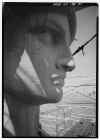 |
New York Architecture Images- Lower Manhattan STATUE OF LIBERTY Landmark |
||||||||||||||||||||||||||||||||||||||||||||||||||||
|
architect |
Sculptor: Auguste
Frederic Bartholdi, Structural Engineer: Gustave Eiffel pedestal Richard Morris Hunt |
||||||||||||||||||||||||||||||||||||||||||||||||||||
|
location |
Liberty Island, New York Harbor. | ||||||||||||||||||||||||||||||||||||||||||||||||||||
|
date |
1884 | ||||||||||||||||||||||||||||||||||||||||||||||||||||
|
style |
Neoclassical realistic sculpture | ||||||||||||||||||||||||||||||||||||||||||||||||||||
|
construction |
iron frame, copper cladding | ||||||||||||||||||||||||||||||||||||||||||||||||||||
|
type |
monumental statue and observation tower | ||||||||||||||||||||||||||||||||||||||||||||||||||||
| Click here for Statue of Liberty gallery | |||||||||||||||||||||||||||||||||||||||||||||||||||||
 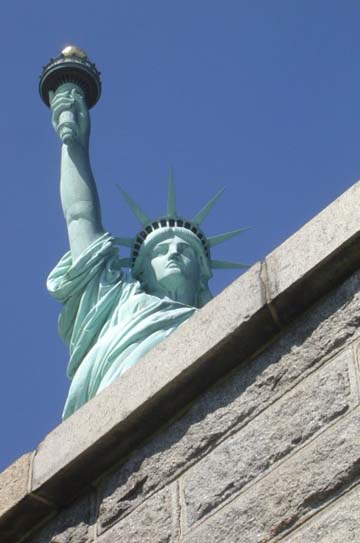 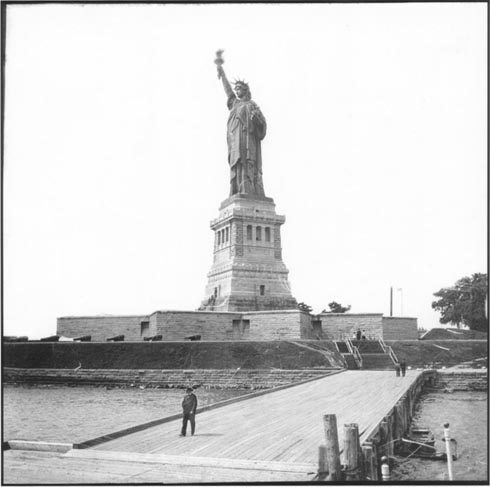 |
|||||||||||||||||||||||||||||||||||||||||||||||||||||
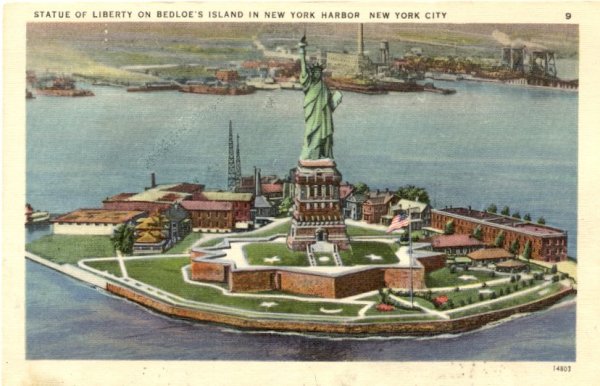 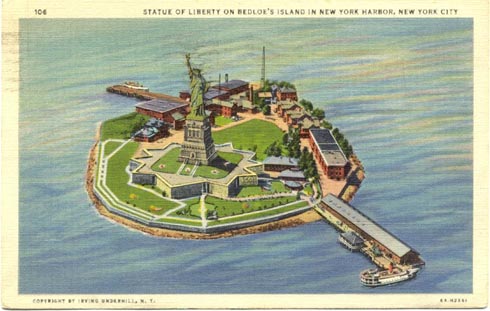 |
|||||||||||||||||||||||||||||||||||||||||||||||||||||
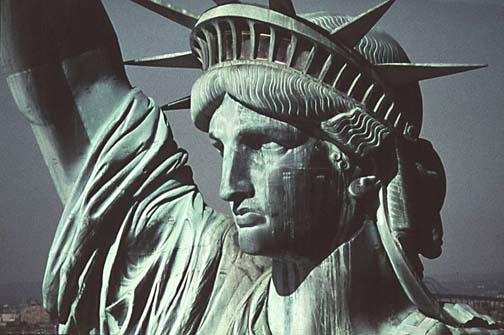 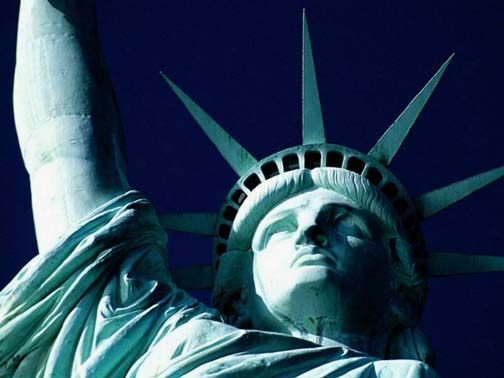 |
|||||||||||||||||||||||||||||||||||||||||||||||||||||
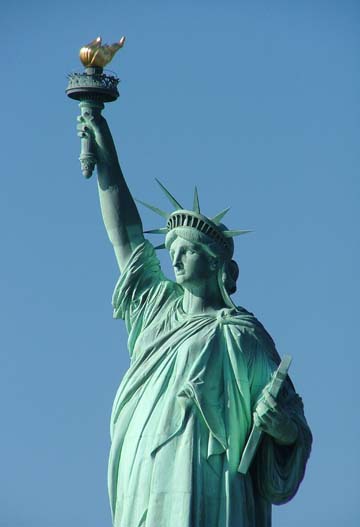 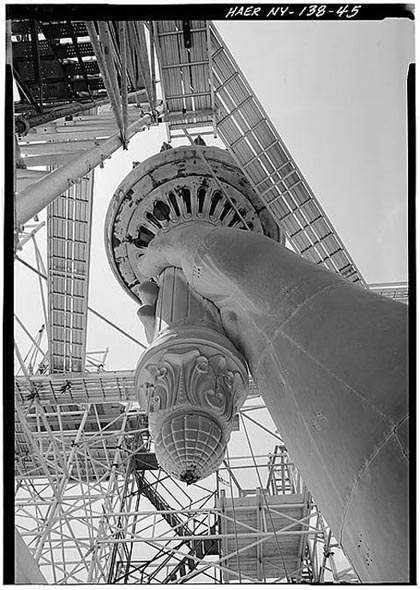 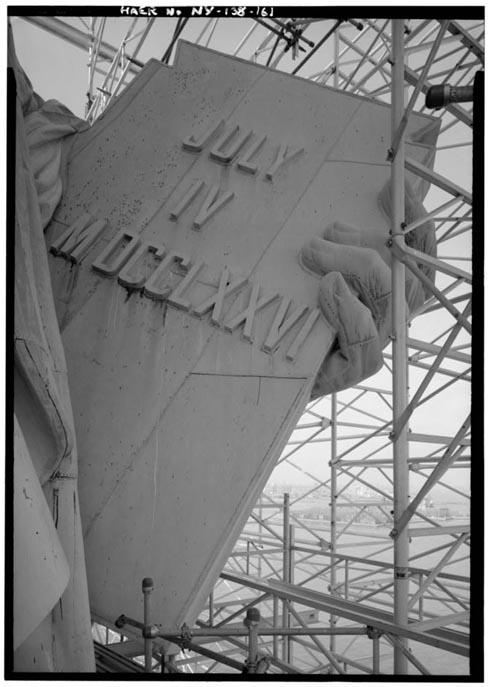 |
|||||||||||||||||||||||||||||||||||||||||||||||||||||
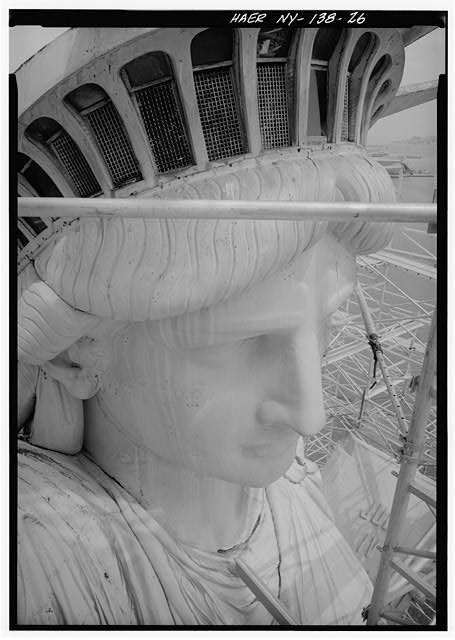 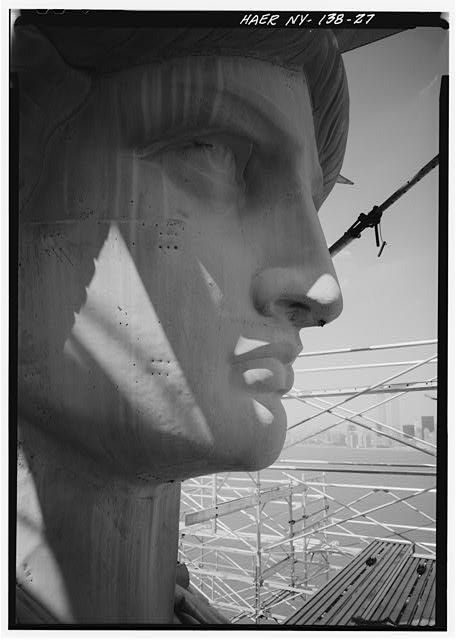 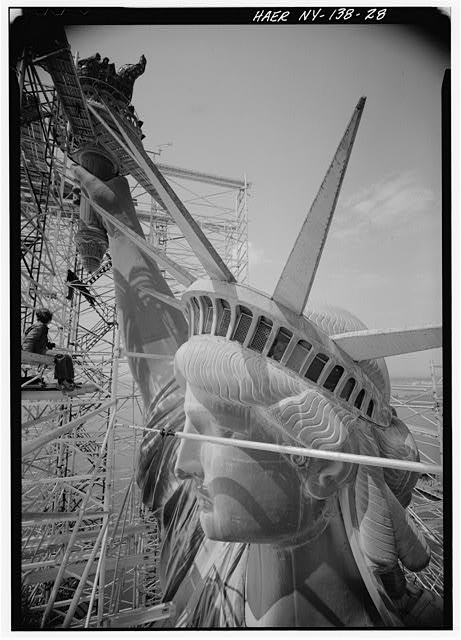 |
|||||||||||||||||||||||||||||||||||||||||||||||||||||
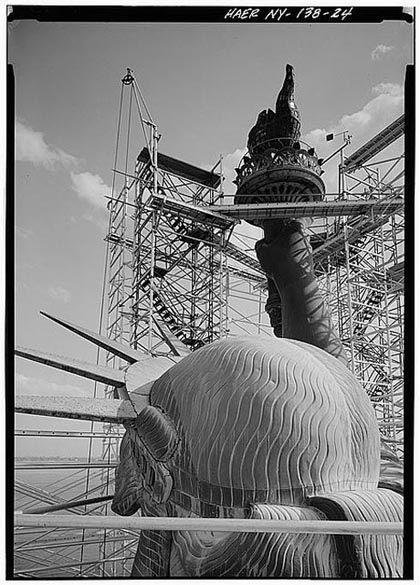 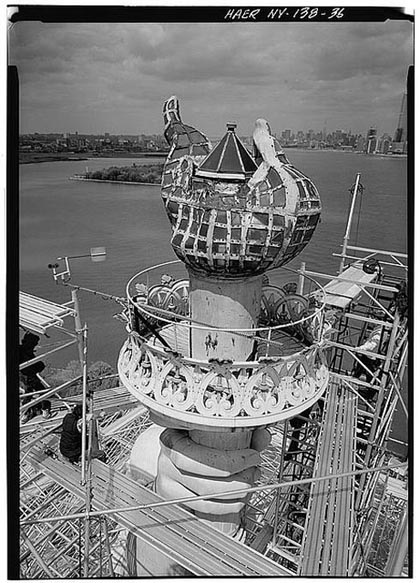 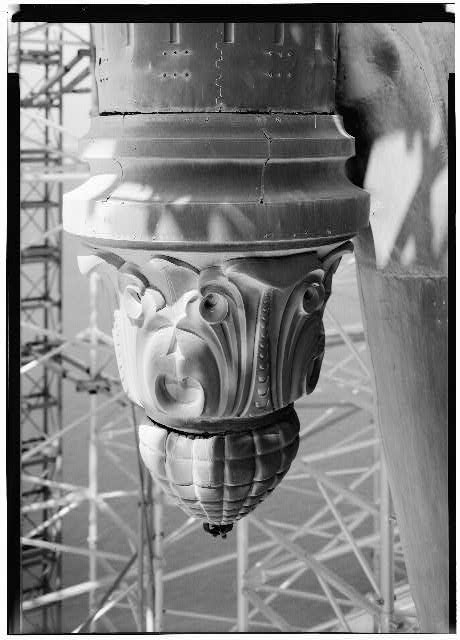 |
|||||||||||||||||||||||||||||||||||||||||||||||||||||
  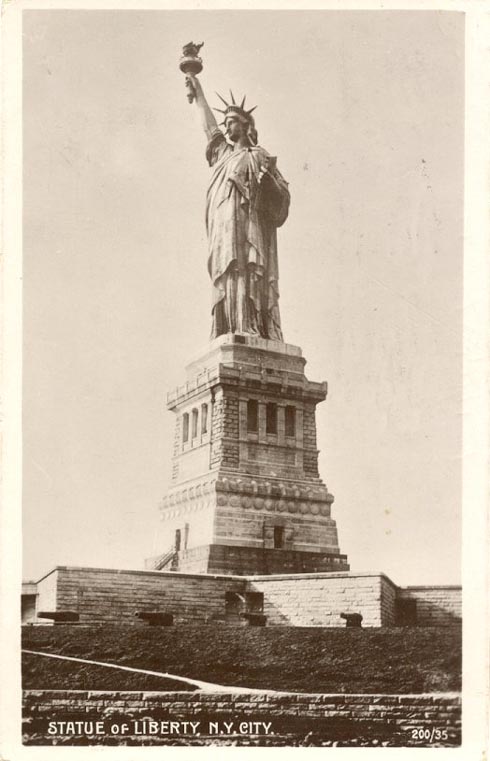 |
|||||||||||||||||||||||||||||||||||||||||||||||||||||
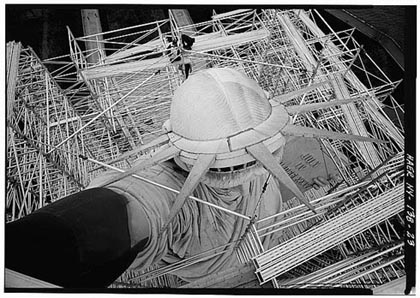 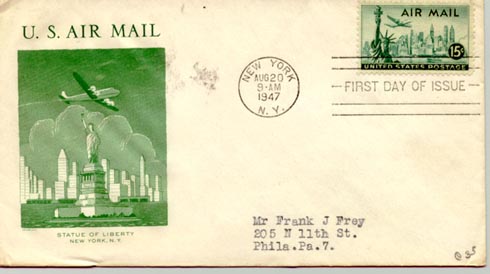  |
|||||||||||||||||||||||||||||||||||||||||||||||||||||
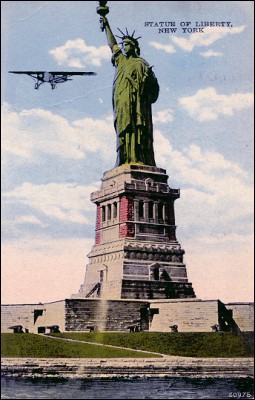 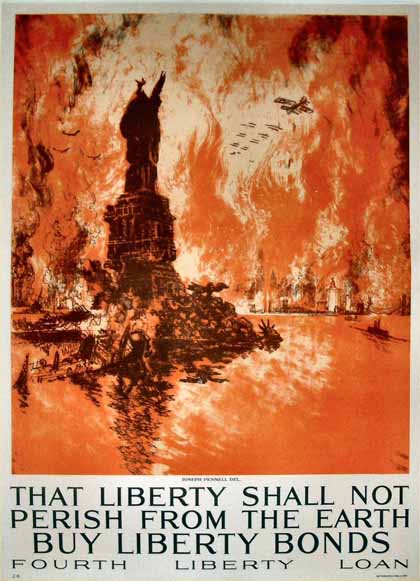 |
|||||||||||||||||||||||||||||||||||||||||||||||||||||
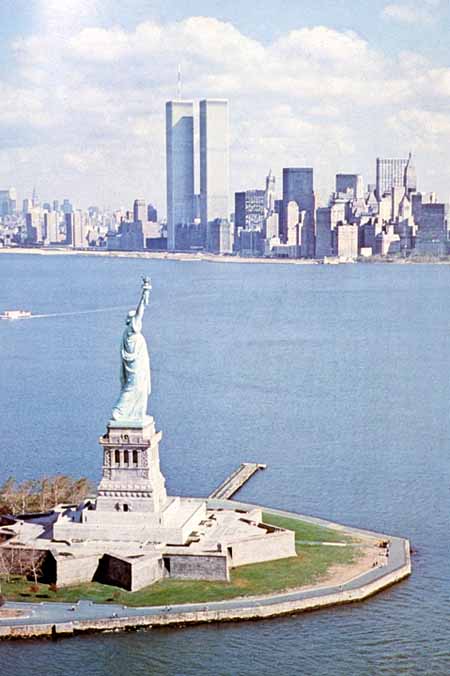 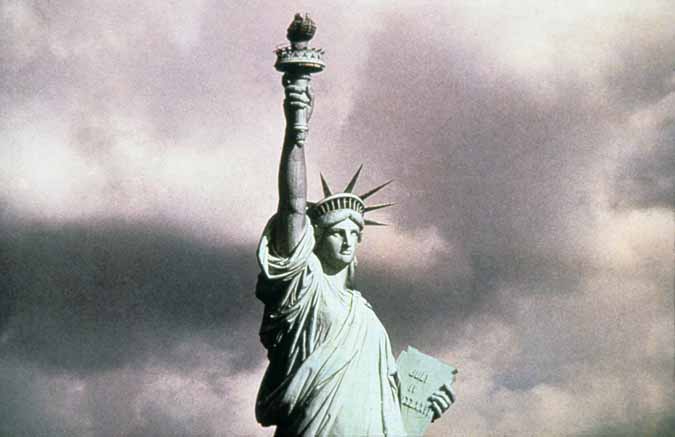 |
|||||||||||||||||||||||||||||||||||||||||||||||||||||
 |
|||||||||||||||||||||||||||||||||||||||||||||||||||||
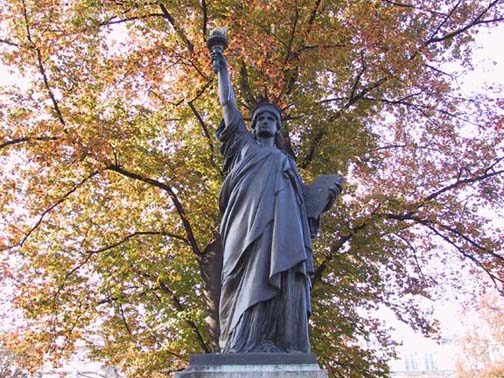  |
|||||||||||||||||||||||||||||||||||||||||||||||||||||
| hi I am from paris and I just checked your fantastic web site, I send you a picture of the original sculpture of the statue of Liberty stands in the Luxembourg gardens. best regards riad KNEIFE | |||||||||||||||||||||||||||||||||||||||||||||||||||||
|
|||||||||||||||||||||||||||||||||||||||||||||||||||||
Politics and the Statue of LibertyThe Statue of Liberty was created out of political struggles. The simple tale is that the generous French offered Liberty as a gift, honoring America's cherished ideals of freedom and opportunity for all. The true circumstances, of course, were much more convoluted. The idea for the Statue of Liberty first took hold of the imagination of its sculptor, Frederic Auguste Bartholdi, during a dinner party at the home of Eduoard-Rene Lefebvre de Laboulaye, a French intellectual and activist who hoped to sponsor an enormous monument that might serve as propaganda against the conservative leaders of the then shaky French government (Trachtenberg, 28). Bartholdi had always wanted to create a colossal, awesome structure, and Laboulaye named him to create what Laboulaye envisioned as an powerful political lever for shaping French government and society. The first conversations with Laboulaye occurred in 1871, more than fifteen years before the Statue of Liberty would actually stand within New York Harbor. A lot of arm-twisting for funds took place in the meantime, along with two trips to the United States, and a variety of differing sketches for the statue. At the sametime, Laboulaye managed to rise quickly to prominence within the French government, pushing an amendment through the chambers of parliament that essentially called for the establishment of republican status for France. The result: the Third Republic. To fortify their regime, Third Republic leaders strongly advocated the completion of Bartholdi's statue. What better way to cement their image of France, writes historian Marvin Trachtenberg, than with a truly grandiose monument linking the history and destiny of France with the great modern republican state, the America that had not only triumphed over its internal enemies but was ascendant in every sphere, already marked to be one of the great world powers? (Trachtenberg, 30). Bartholdi manipulated the Statue of Liberty to ensure coherence with this agenda. He positioned her within New York Harbor to face outward toward Europe (and particularly, France), looking across the Atlantic in hope that Europe's countries might soon realize her strength. Not laden with the swords and shields of war and imperialism, but instead standing resolute with a torch to "enlighten the world" to democracy, the Statue of Liberty was built to be an icon of France's republican ideals. Someday, Laboulaye and his followers hoped, their country would grow stronger by recognizing her strength. Within the United States, however, the Statue of Liberty was interpreted entirely differently. Instead of the great symbol of opportunity it would someday stand to be, the eminent arrival of the statue produced not much more than a great headache. During his visits to the United States, Bartholdi had secured promises from several prominent citizens that a giant pedestal would be erected as her perch. By the time Liberty was ready to be shipped to the United States, however, little progress had been made. Just as America was ill-prepared for the masses of immigrants it would soon host, the country was unprepared for the Statue that would someday sing their welcome. It took the grassroots efforts of Joseph Pulitizer and his New York World to pull together enough money--sometimes sent in the form of single dollar bills--to finish the pedestal. By 1886, after much political and financial finagling, the Statue of Liberty was erected and dedicated amid a grand ceremony on Bedloe's Island. President Grover Cleveland and several local politians addressed an audience of thousands, and the Statue was finally unveiled.
|
|||||||||||||||||||||||||||||||||||||||||||||||||||||
|
notes |
"The Statue of Liberty National Monument officially celebrated her 100th
birthday on October 28, 1986. The people of France gave the Statue to the
people of the United States over one hundred years ago in recognition of the
friendship established during the American Revolution. Over the years, the
Statue of Liberty has grown to include freedom and democracy as well as this
international friendship.
"Sculptor Frederic Auguste Bartholdi was commissioned to design a sculpture with the year 1876 in mind for completion, to commemorate the centennial of the American Declaration of Independence. The Statue was a joint effort between America and France and it was agreed upon that the American people were to build the pedestal, and the French people were responsible for the Statue and its assembly here in the United States. However, lack of funds was a problem on both sides of the Atlantic Ocean. In France, public fees, various forms of entertainment, and a lottery were among the methods used to raise funds. In the United States, benefit theatrical events, art exhibitions, auctions and prize fights assisted in providing needed funds. Meanwhile in France, Bartholdi required the assistance of an engineer to address structural issues associated with designing such as colossal copper sculpture. Alexandre Gustave Eiffel (designer of the Eiffel Tower) was commissioned to design the massive iron pylon and secondary skeletal framework which allows the Statue's copper skin to move independently yet stand upright. Back in America, fund raising for the pedestal was going particularly slowly, so Joseph Pulitzer (noted for the Pulitzer Prize) opened up the editorial pages of his newspaper, "The World" to support the fund raising effort. Pulitzer used his newspaper to criticize both the rich who had failed to finance the pedestal construction and the middle class who were content to rely upon the wealthy to provide the funds. Pulitzer's campaign of harsh criticism was successful in motivating the people of America to donate. "Financing for the pedestal was completed in August 1885, and pedestal construction was finished in April of 1886. The Statue was completed in France in July, 1884 and arrived in New York Harbor in June of 1885 on board the French frigate "Isere" which transported the Statue of Liberty from France to the United States. In transit, the Statue was reduced to 350 individual pieces and packed in 214 crates. The Statue was re-assembled on her new pedestal in four months time. On October 28th 1886, the dedication of the Statue of Liberty took place in front of thousands of spectators. She was a centennial gift ten years late. "The story of the Statue of Liberty and her island has been one of change. The Statue was placed upon a granite pedestal inside the courtyard of the star-shaped walls of Fort Wood (which had been completed for the War of 1812.) The United States Lighthouse Board had responsibility for the operation of the Statue of Liberty until 1901. After 1901, the care and operation of the Statue was placed under the War Department. A Presidential Proclamation declared Fort Wood (and the Statue of Liberty within it) a National Monument on October 15th, 1924 and the monument's boundary was set at the outer edge of Fort Wood. In 1933, the care and administration of the National Monument was transferred to the National Park Service. On September 8, 1937, jurisdiction was enlarged to encompass all of Bedloe's Island and in 1956, the island's name was changed to Liberty Island. On May 11, 1965, Ellis Island was also transferred to the National Park Service and became part of the Statue of Liberty National Monument. " Details
"Visitors climb 354 steps to reach the crown or 192 steps in order to reach the top of the pedestal. There are 25 windows in the crown which symbolize 25 gemstones found on the earth. The seven rays of the Statue's crown represent the seven seas and continents of the world. The tablet which the Statue holds in her left hand reads (in Roman numerals) "July 4th, 1776." The total weight of copper in the Statue is 62,000 pounds (31 tons) and the total weight of steel in the Statue is 250,000 pounds (125 tons). Total weight of the Statue's concrete foundation is 54 million pounds (27,000 tons). The copper sheeting of the Statue is 3/32 of an inch thick or 2.37mm. "Wind sway: winds of 50 miles per hour cause the Statue to sway 3 inches (7.62cm) and the torch sways 5 inches (12.70cm)." Pedestal Inscription "Give me your tired, your poor, your
huddled masses — Emma Lazarus, 1883, written to help raise funds for construction of the pedestal. Date Construction of the Statue began in
France: 1875 |
||||||||||||||||||||||||||||||||||||||||||||||||||||
|
links |
Library Congress photos
http://www.endex.com/gf/buildings/liberty/liberty.html The
Staten Island Web |
||||||||||||||||||||||||||||||||||||||||||||||||||||
|
Liberty Enlightening the World (French: La liberté éclairant le monde),
known more commonly as the Statue of Liberty (Statue de la Liberté), is
a large statue that was presented to the United States by France in
1886. It stands at Liberty Island, New York in New York Harbor as a
welcome to all visitors, immigrants, and returning Americans. The copper
patina-clad statue, dedicated on October 28, 1886, commemorates the
centennial of the United States and is a gesture of friendship from
France to America. Frédéric Auguste Bartholdi sculpted the statue and
obtained a U.S. patent useful for raising construction funds through the
sale of miniatures. Alexandre Gustave Eiffel (designer of the Eiffel
Tower) engineered the internal structure. Eugène Viollet-le-Duc was
responsible for the choice of copper in the statue's construction and
adoption of the repoussé technique. The statue is of a female figure walking upright, dressed in a robe and a seven point spiked rays representing a nimbus (halo), holding a stone tablet close to her body in her left hand and a flaming torch high in her right hand. The tablet bears the words "JULY IV MDCCLXXVI" (July 4, 1776), commemorating the date of the United States Declaration of Independence. The statue is made of a sheeting of pure copper, hung on a framework of steel (originally puddled iron) with the exception of the flame of the torch, which is coated in gold leaf. It stands atop a rectangular stonework pedestal with a foundation in the shape of an irregular eleven-pointed star. The statue is 151 feet 1 inch (46.5 m) tall, with the pedestal and foundation adding another 154 feet (46.9 m). Worldwide, the Statue of Liberty is one of the most recognizable icons of the United States,[2] and, more generally, represents liberty and escape from oppression. The Statue of Liberty was, from 1886 until the jet age, often one of the first glimpses of the United States for millions of immigrants after ocean voyages from Europe. Visually, the Statue of Liberty appears to draw inspiration from il Sancarlone or the Colossus of Rhodes. The statue is a central part of Statue of Liberty National Monument, administered by the National Park Service. Symbolism The Statue of Liberty's classical appearance (Roman stola, sandals, facial expression) derives from Libertas, ancient Rome's goddess of freedom from slavery, oppression, and tyranny. Her raised right foot is on the move. This symbol of Liberty and Freedom is not standing still or at attention in the harbor, she is moving forward, as her left foot tramples broken shackles at her feet, in symbolism of the United States's freedom from oppression and tyranny.[3] The seven spikes on the crown represent the Seven Seas and seven continents.[4] Her torch signifies enlightenment. The tablet in her hand shows the date of the nation's birth, July 4, 1776. The general appearance of the statue’s head and dress robe looks similar to a representation of the Greek Sun-god Apollo or Helios as that has been preserved on an ancient marble tablet (today in the Archaeological Museum of Corinth (Corinth, Greece) – Apollo was represented as a solar deity as seen in the picture on the right, dressed in similar to the Statue's robe and having on its head the seven point spiked rays of the Helios-Apollo's sun rays, like the Statue's nimbus (halo). Since 1903, the statue, also known as "Lady Liberty," has been associated with Emma Lazarus's poem The New Colossus and has been a symbol of welcome to arriving immigrants, who could see the statue when they got close to the U.S. History Discussions in France over a suitable gift to the United States to mark the Centennial of the American Declaration of Independence were headed by the politician and sympathetic writer of the history of the United States, Édouard René Lefèvre de Laboulaye. French sculptor Frédéric Bartholdi was commissioned to design a sculpture with the year 1876 in mind for completion. The idea for the commemorative gift then grew out of the political turmoil which was shaking France at the time. The French Third Republic was still considered as a "temporary" arrangement by many, who wished a return to monarchism, or to some form of constitutional authoritarianism which they had known under Napoleon. The idea of giving a colossal representation of republican virtues to a "sister" republic across the sea served as a focus for the republican cause against other politicians. Frédéric BartholdiUnsubstantiated sources cite different models for the face of the statue. One indicated the then-recently widowed Isabella Eugenie Boyer, the wife of Isaac Singer, the sewing-machine industrialist. "She was rid of the uncouth presence of her husband, who had left her with only his most socially desirable attributes: his fortune and … his children. She was, from the beginning of her career in Paris, a well-known figure. As the good-looking French widow of an American industrialist she was called upon to be Bartholdi's model for the Statue of Liberty." [5] Another source believed that the "stern face" belonged to Bartholdi's mother, Charlotte Bartholdi (1801–1891), with whom he was very close. [6] National Geographic magazine also pointed to his mother, noting that Bartholdi never denied nor explained the resemblance. [7] The first model, on a small scale, was built in 1870. This first statue is now in the Jardin du Luxembourg in Paris. While on a visit to Egypt that was to shift his artistic perspective from simply grand to colossal, Bartholdi was inspired by the project of the Suez Canal which was being undertaken by Count Ferdinand de Lesseps, who later became a lifelong friend of his. He envisioned a giant lighthouse standing at the entrance to the canal and drew plans for it. It would be patterned after the Roman goddess Libertas, modified to resemble a robed Egyptian peasant, a fallaha, with light beaming out from both a headband and a torch thrust dramatically upward into the skies. Bartholdi presented his plans to the Egyptian Khediev, Isma'il Pasha, in 1867 and, with revisions, again in 1869, but the project was never commissioned because of financial issues the country was going through.[8] It was agreed upon that in a joint effort the American people were to build the base, and the French people were responsible for the Statue and its assembly in the United States. In France, public donations, various forms of entertainment including notably performances of La liberté éclairant le monde (Liberty enlightening the world) by soon-to-be famous composer Charles Gounod at Paris Opera, and a charitable lottery were among the methods used to raise the 2,250,000 francs ($250,000). In the United States, benefit theatrical events, art exhibitions, auctions and prize fights assisted in providing needed funds. Meanwhile in France, Bartholdi required the assistance of an engineer to address structural issues associated with designing such a colossal copper sculpture. Gustave Eiffel (designer of the Eiffel Tower) was commissioned to design the massive iron pylon and secondary skeletal framework which allows the Statue's copper skin to move independently yet stand upright. Eiffel delegated the detailed work to his trusted structural engineer, Maurice Koechlin. Bartholdi had initially planned to have the statue completed and presented to the United States on July 4, 1876, but a late start and subsequent delays prevented it. However, by that time the right arm and torch were completed. This part of the statue was displayed at the Centennial Exposition in Philadelphia, where visitors were charged 50 cents to climb the ladder to the balcony. The money raised this way was used to start funding the pedestal. On June 30, 1878, at the Paris Exposition, the completed head of the statue was showcased in the garden of the Trocadéro palace, while other pieces were on display in the Champs de Mars. Back in America, the site, authorized in New York Harbor by an act of Congress, 1877, was selected by General William Tecumseh Sherman, who settled on Bartholdi's own choice, then known as Bedloe's Island (named after Isaac Bedloe), where there was already an early 19th century star-shaped fortification named Fort Wood. United States Minister to France Levi Parsons Morton hammered the first nail in the construction of the statue. Bartholdi's design patentOn February 18, 1879, Bartholdi was granted a design patent, U.S. Patent D11,023 , on "a statue representing Liberty enlightening the world, the same consisting, essentially, of the draped female figure, with one arm upraised, bearing a torch, and while the other holds an inscribed tablet, and having upon the head a diadem, substantially as set forth." The patent described the head as having "classical, yet severe and calm, features," noted that the body is "thrown slightly over to the left so as to gravitate upon the left leg, the whole figure thus being in equilibrium," and covered representations in "any manner known to the glyptic art in the form of a statue or statuette, or in alto-relievo or bass-relief, in metal, stone, terra-cotta, plaster-of-paris, or other plastic composition."[9] The financing for the statue was completed in France in July 1882. Fund-raising for the pedestal, led by William M. Evarts, was going slowly, so Hungarian-born publisher Joseph Pulitzer (who established the Pulitzer Prize) opened up the editorial pages of his newspaper, The World, to support the fund raising effort in 1883. Pulitzer used his newspaper to criticize both the rich, who had failed to finance the pedestal construction, and the middle class who were content to rely upon the wealthy to provide the funds.[10]. Although Pulitzer's campaign was an important contribution to the effort, its dramatic effect should not be allowed to overshadow the plain fact that Senator Evarts and the American Committee he headed raised the majority of funds for the pedestal as a whole. The construction of the statue was completed in France in July 1884. The cornerstone of the pedestal, designed by American architect Richard Morris Hunt, was laid on August 5, 1884, but the construction had to be stopped by lack of funds in January 1885. It was resumed on May 11, 1885 after a renewed fund campaign by Joseph Pulitzer in March 1885. Thirty-eight of the forty-six courses of masonry were yet to be built. The Statue arrived in New York Harbor on June 17, 1885 on board the French frigate Isère. To prepare for transit, the Statue was reduced to 350 individual pieces and packed in 214 crates. (The right arm and the torch, which were completed earlier, had been exhibited at the Centennial Exposition in Philadelphia, Pennsylvania in 1876, and thereafter at Madison Square in New York City.) Financing for the pedestal was completed on August 11, 1885 and construction was finished on April 22, 1886. When the last stone of the pedestal was swung into place the masons reached into their pockets and showered into the mortar a collection of silver coins. Built into the pedestal's massive masonry are two sets of four iron girders, connected by iron tie beams that are carried up to become part of Eiffel's framework for the statue itself. Thus Liberty is integral with her pedestal. The statue, which was stored for eleven months in crates waiting for its pedestal to be finished, was then re-assembled in four months' time. On October 28, 1886, the Statue of Liberty was unveiled by President Grover Cleveland in front of thousands of spectators. (Cleveland, as Governor of the State of New York, had earlier vetoed a bill by the New York legislature to contribute $50,000 to the building of the pedestal.) [11] The Statue of Liberty functioned as a lighthouse from 1886 to 1902[12][13]). At that time the U.S. Lighthouse board was responsible for its operation. There was a lighthouse keeper and the electric light could be seen for 24 miles (39 km) at sea. There was an electric plant on the island to generate power for the light. In 1913 a group of young pilots graduated from the Moissant School of Aviation based on Long Island. One of the graduates, the mexican pilot Juan Pablo Aldasoro was selected to perform the first flight above the Statue of Liberty. All of the graduates later on became members of the Early Birds of Aviation. In 1916, floodlights were placed around the base of the statue. Also in 1916, the Black Tom Explosion caused $100,000 worth of damage ($1.9 million in 2007 dollars) to the statue, embedding shrapnel and eventually leading to the closing of the torch to visitors. The same year, Gutzon Borglum, sculptor of Mount Rushmore, modified the original copper torch by cutting away most of the copper in the flame, retrofitting glass panes and installing an internal light.[14] After these modifications, the torch severely leaked rainwater and snowmelt, accelerating corrosion inside the statue. President Franklin D. Roosevelt rededicated the Statue of Liberty on its 50th anniversary (October 28, 1936). In 1956, through an act of congress, Bedloe's Island was officially renamed Liberty Island, though Liberty Island had been used informally since the turn of the century. As with all historic areas administered by the National Park Service, Statue of Liberty National Monument, along with Ellis Island and Liberty Island, was listed on the National Register of Historic Places on October 15, 1966[15]. In 1984, the Statue of Liberty was added to the World Heritage List.[16] In 2007, the Statue of Liberty was one of 20 finalists in a competition to name the New Seven Wonders of the World. Physical characteristics There are 354 steps inside the statue and its pedestal. There are 25 windows in the crown which comprise the jewels beneath the seven rays of the diadem. The tablet which the statue holds in her left hand reads, in Roman numerals, "July 4, 1776" the day of America's independence from Britain. The Statue of Liberty was engineered to withstand heavy winds. Winds of 50 miles per hour cause the Statue to sway 3 inches (7.62 cm) and the torch to sway 5 inches (12.7 cm). This allows the Statue to move rather than break in high wind load conditions. Origin of the copper Full-size replica of the face of the Statue, seen as part of the exhibit in one of the corridors of the Statue's pedestal. Note the retention of the original copper color.Historical records make no mention of the source of the copper used in the Statue of Liberty. In the village of Vigsnes in the municipality of Karmøy, Norway, tradition holds that the copper came from the French-owned Vigsnes Mine.[17][18] Ore from this mine, refined in France and Belgium, was a significant source of European copper in the late nineteenth century. In 1985, Bell Laboratories used emission spectrography to compare samples of copper from the Visnes Mines and from the Statue of Liberty, found the spectrum of impurities to be very similar, and concluded that the evidence argued strongly for a Norwegian origin of the copper. Other sources say that the copper was mined in Nizhniy Tagil.[19]. The copper sheets were created in the workshops of the Gaget-Gauthier company, and shaped in the Ateliers Mesureur in the west of Paris in 1878. Funding for the copper was provided by Pierre-Eugène Secrétan. Liberty centennial First Lady Nancy Reagan re-opens the statue to the public after the festivitiesThe Statue of Liberty was one of the earliest beneficiaries of a cause marketing campaign. A 1983 promotion advertised that for each purchase made with an American Express card, American Express would contribute one penny to the renovation of the statue. The campaign generated contributions of $1.7 million to the Statue of Liberty restoration project. In 1984, the statue was closed so that a $62 million renovation could be performed for the statue's centennial. Chrysler chairman Lee Iacocca was appointed by President Reagan to head the commission overseeing the task (but was later dismissed "to avoid any question of conflict" of interest).[20] Workers erected scaffolding around the statue, obscuring it from public view until the rededication on July 3, 1986 — the scaffolding-clad statue can be seen in the 1984 film Desperately Seeking Susan and in the 1985 film Remo Williams: The Adventure Begins and in the 1985 film Brewster's Millions. Inside work began with workers using liquid nitrogen to remove seven layers of paint applied to the interior of the copper skin over the decades. That left two layers of tar originally applied to plug leaks and prevent corrosion. Blasting with baking soda removed the tar without further damaging the copper. Larger holes in the copper skin had edges smoothed then mated with new copper patches.[citation needed] Each of the 1,350 shaped iron ribs backing the skin had to be removed and replaced. The iron had experienced galvanic corrosion wherever it contacted the copper skin, losing up to 50% of its thickness. Bartholdi had anticipated the problem and used an asbestos/pitch combination to separate the metals, but the insulation had worn away decades before. New bars of stainless steel bent into matching shapes replaced the iron bars, with Teflon film separating them from the skin for further insulation and friction reduction. The internal structure of the upraised right arm was reworked. The statue was erected with the arm offset 18" (0.46 m) to the right and forward of Eiffel's central frame, while the head was offset 24" (0.61 m) to the left, which compromised the framework. Theory held that Bartholdi made the modification without Eiffel's involvement after seeing the arm and head were too close. Engineers considered reinforcements made in 1932 insufficient and added diagonal bracing in 1984 and 1986 to make the arm structurally sound. Besides the replacement of much of the internal iron with stainless steel and the structural reinforcement of the statue itself, the restoration of the mid-1980s also included the replacement of the original torch with a replica, replacing the original iron stairs with new stairs, installing a newer elevator within the pedestal, and upgrading climate control systems. The Statue of Liberty was reopened to the public on July 5, 1986. New torch The statue's original torch, replaced in 1986A new torch replaced the original, which was deemed beyond repair because of the extensive 1916 modifications. The 1886 torch is now in the monument's lobby museum. The new torch has gold plating applied to the exterior of the "flame," which is illuminated by external lamps on the surrounding balcony platform. Aftermath of 9/11 The interior of the statue used to be open to visitors. They arrived by ferry and could climb the circular single-file stairs (limited by the available space) inside the metallic statue, exposed to the sun out in the harbor (the interior reaching extreme temperatures, particularly in summer months), and about 30 people at a time could fit up into the crown. This provided a broad view of New York Harbor (it faces the ocean) through 25 windows, the largest approximately 18" (46 cm) in height. The view did not, therefore, include the skyline of New York City. The wait outside regularly exceeded 3 hours, excluding the wait for ferries and ferry tickets. Liberty Island closed on September 11, 2001; the island reopened in December, the monument reopened on August 3, 2004, and the statue has remained closed. The National Park Service claims that the statue is not shut because of a terrorist threat, but principally because of a long list of fire regulation contraventions, including inadequate evacuation procedures. The museum and ten-story pedestal are open for visits but are only accessible if visitors have a "Monument Access Pass" which is a reservation that visitors must make at least two days in advance of their visit and pick up before boarding the ferry. There are a maximum of 3000 passes available each day (with a total of 15000 visitors to the island daily). The interior of the statue remains closed, although a glass ceiling in the pedestal allows for views of Eiffel's iron framework. Visitors to Liberty Island and the Statue are subject to restrictions, including personal searches similar to the security found in airports. The Statue of Liberty had previously been threatened by terrorism, according to the FBI. On February 18, 1965, the Federal Bureau of Investigation (FBI) announced it had uncovered a plot by three commandos from the Black Liberation Front, who were allegedly connected to Cuba, and a female co-conspirator from Montreal connected with the Front de libération du Québec (FLQ), seeking independence for Quebec from Canada, who were sent to destroy the statue and at least two other national monuments — the Liberty Bell in Philadelphia and the Washington Monument in Washington, D.C. In June 2006, a bill, S. 3597, was proposed in Senate which, if approved, could re-open the crown and interior of the Statue of Liberty to visitors.[21] In July 2007, a similar measure was proposed in the House of Representatives.[22] On August 9, 2006 National Park Service Director Fran Mainella, in a letter to Congressman Anthony Weiner of New York stated that the crown and interior of the statue would remain closed indefinitely. The letter stated that "the current access for all patterns reflect a responsible management strategy in the best interests of all our visitors.".[23] Critics contend that closing the Statue of Liberty indefinitely is an overreaction, and that safe access could easily be resumed under tighter security measures[citation needed]. Jumps At 2:45 p.m. on February 2, 1912, steeplejack Frederick R. Law successfully performed a parachute jump from the observation platform surrounding the torch. It was done with the permission of the army captain administering the island. The New York Times reported that he "fell fully seventy-five feet [23 m] like a dead weight, the parachute showing no inclination whatsoever to open at first", but he then descended "gracefully", landed hard, and limped away.[24] The first suicide took place on May 13, 1929. The Times reported a witness as saying the man, later identified as "Ralph Gleason," crawled out through one of the windows of the crown, turned around as if to return, "seemed to slip" and "shot downward, bouncing off the breast of the statue in the plunge." The body landed at a patch of grass at the base, just a few feet from a workman who was mowing the grass.[25] On August 23, 2001, French stuntman Thierry Devaux parasailed onto the monument and got hung up on the statue's torch in a bungled attempt to bungee jump from it. He was not hurt and was charged with four misdemeanor offenses including trespassing. Inscription The interior of the pedestal contains a bronze plaque inscribed with the poem "The New Colossus" by Emma Lazarus. It has never been engraved on the exterior of the pedestal, despite such depictions in editorial cartoons.[26] Not like the brazen giant of Greek fame, With conquering limbs astride from land to land; Here at our sea-washed, sunset gates shall stand A mighty woman with a torch, whose flame Is the imprisoned lightning, and her name Mother of Exiles. From her beacon-hand Glows world-wide welcome; her mild eyes command The air-bridged harbor that twin cities frame. "Keep ancient lands, your storied pomp!" cries she With silent lips. "Give me your tired, your poor, Your huddled masses yearning to breathe free, The wretched refuse of your teeming shore. Send these, the homeless, tempest-tost to me, I lift my lamp beside the golden door!" Replicas and derivative works The French Statue of Liberty on the river Seine in Paris, France. Given to the city in 1889, it faces southwest, downstream along the Seine. Hundreds of other Statues of Liberty have been erected worldwide. During the 1950s and 1960s, the Boy Scouts of America donated replicas of Lady Liberty to small towns across America. There is a sister statue in Paris and several others elsewhere in France, including one in Bartholdi's home town of Colmar, erected in 2004 to mark the centenary of Bartholdi's death; they also exist in Austria, Germany, Italy, Japan, China, and Vietnam; one existed in Hanoi during French colonial days. There are replicas in theme parks and resorts, including the New York-New York Hotel & Casino in Las Vegas on the Strip, replicas created as commercial advertising, and replicas erected in U.S. communities by patriotic benefactors, including no less than two hundred donated by Boy Scout troops to local communities. During the Tiananmen Square protest of 1989, Chinese student demonstrators in Beijing built a 10 m image called the Goddess of Democracy, which sculptor Tsao Tsing-yuan said was intentionally dissimilar to the Statue of Liberty to avoid being "too openly pro-American".[27] Since the invention of foam liberty hats and flashlight torches, replicating the statue of liberty has been seen world abound. This form of replication is especially popular on liberty island where it has become a staple activity for visiting tourists. In popular culture The Statue of Liberty quickly became a popular icon, featured in scores of posters, pictures, motion pictures, and books. A 1911 O. Henry story relates a fanciful conversation between "Mrs. Liberty" and another statue. It figured in 1918 Liberty Loan posters. During the 1940s and 1950s, pulp Science Fiction magazines featured Lady Liberty surrounded by ruins or by the sediments of the ages. It has been in dozens of motion pictures including: climactic confrontations in the 1942 Alfred Hitchcock movie Saboteur The 2000 film X-Men. Half submerged in the sand, the statue provided the apocalyptic revelation at the end of Planet of the Apes. In the 1989 film, Ghostbusters 2, it comes to life and helps defeat the evil villain. It was the subject of a 1979 University of Wisconsin-Madison prank in which Lady Liberty appeared to be standing submerged in a frozen-over local lake. It has appeared on New York and New Jersey license plates, is used as a logo for the NHL's New York Rangers and the WNBA's New York Liberty. It was the subject of magician David Copperfield's largest vanishing act. It has been seen heavily in the trailers for the film Cloverfield, in which the statue's head is ripped off by the monster and thrown into New York. The poster for the film is made up predominantly of the sight of the statue's headless body. The statue is often used as a comparative measurement of height in books and documentaries. |
|||||||||||||||||||||||||||||||||||||||||||||||||||||